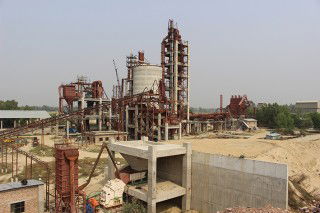The European cement association, CEMBUREAU, has welcomed the prospect of an EU carbon border mechanism although this requires a number of design principles, said the association in a statement.
In the initial phase the mechanism, which should be based on verified direct and indirect emissions from imports to the EU, should be complementary to the free allowances of the EU emissions trading scheme (EU ETS) and applicable to all ETS sectors alike. In addition, it must be fully WTO compatible. It must also provide a CO2 charge exemption for EU exporters.
Koen Coppenholle, CEO of CEMBUREAU, said “A carbon border mechanism is a chance to create the level playing field in which our industry needs to help deliver the EU’s carbon neutrality objectives, and further cut CO2 emissions in the EU and beyond.
“However, it is imperative that any carbon border mechanism co-exists with free allocation under the EU ETS, at least until the end of Phase IV. The replacement of the existing carbon leakage measures by an untested mechanism would create considerable uncertainty and risks for investments in the EU, at a time the industry needs a predictable framework to deliver low-carbon investments.
“Carbon border mechanisms are complex tools by nature and so it is essential to get their design right. A poorly-designed mechanism could indeed have significant consequences for our industry. CEMBUREAU looks forward to continue working with the European Union on this.”
A well-designed carbon border mechanism could also support the EU’s drive to foster climate ambitions in third countries and therefore, result in deeper carbon emissions reductions worldwide. Third-country producers will be incentivised to reduced their carbon emissions and their governments will be encouraged to set up domestic carbon pricing schemes with equivalent vigour to the EU system, said CEMBUREAU.
The mechanism is also expected to send long-term signals to investors across the region and lead to upscaling of low-carbon technologies with revenues from the scheme fostering research and deployment in such technologies across Europe.

Supreme court orders relocation of cement and other industries
Nepal’s Supreme Court has ordered the relocation of industries surrounding Lumbini, the birthpla...